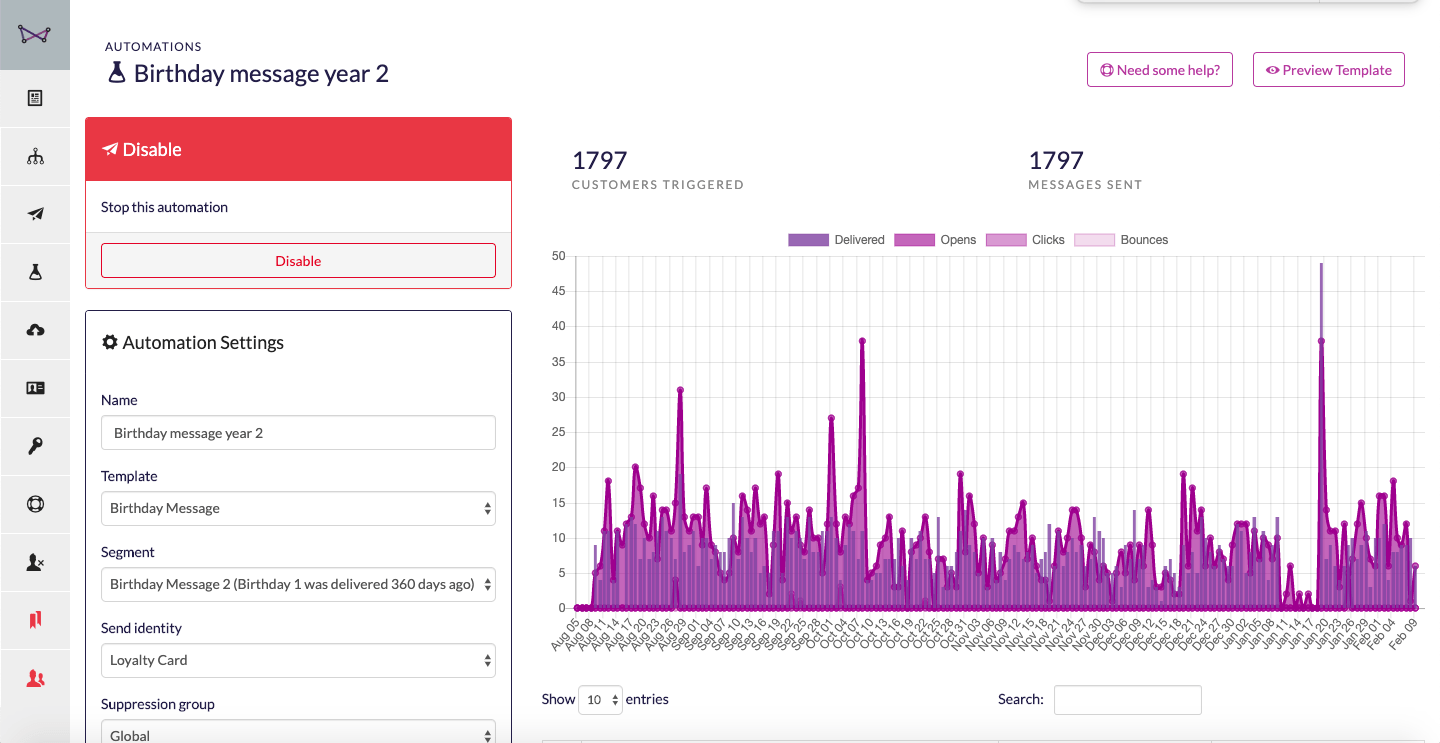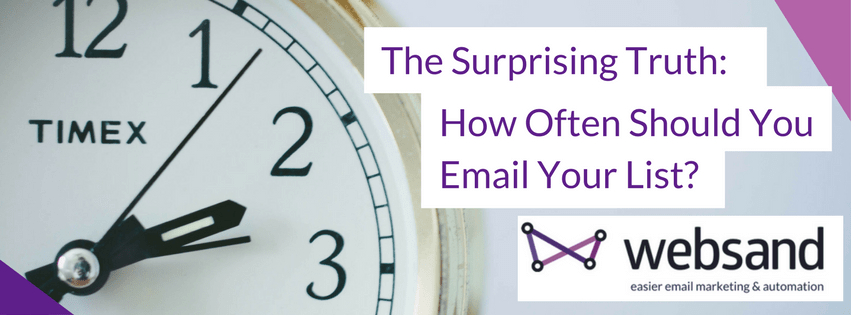How Often Should You Email Your List?
You’ve set up an email list. There’s a Word document on your hard drive full of subject lines you’re itching to try. You’ve even created a lead magnet that customers actually want to download.
But now there’s another problem ahead of you.
How often should you email your list?
Put that exact phrase into Google and you’ll get 194,000,000 results. That’s a lot of information to wade through.
Now we’ve talked before about why email automation is the best way to 1-up your business. You can ‘set and forget’ your emails based on what your customer does, and how they interact with your business. They get the right email for them at the time they need it. You physically can’t send too many–or too few–emails.
But what about the rest of your emails? You can’t just rely on automated emails to build a relationship with your customers. When do you send emails? And how often do you send them?
If you send emails too often, you risk unsubscribes or–worse still–being flagged as a spammer. Send too few and customers forget who you are.
Let’s see if we can answer the frequency question once and for all.
When is the best time to send an email?
In 2015, Hubspot conducted research into email frequency. They found that emails sent on Tuesday had the highest opens. Monday and Wednesday weren’t far off.
But Mailchimp ran a similar experiment and discovered Thursday was a better day. Though they both agree that Friday, Saturday, and Sunday aren’t the best days to send emails.
Various studies agree that emails sent between 10 and 12 am also had the highest opens.
There’s a flaw with such talk about optimal send times. Unless you’re a brick-and-mortar store with an established customer base, there’s no guarantee that most of your customers are in the same time zone.
So if you send an email on a Tuesday at 10 am but you’re in the UK, then it hits New York inboxes at 5 am. But if you send your email to land in New York at 10 am, then it reaches your UK customers at 3 pm.
Only you know where the majority of your customers are located. If you want to use these insights as a yardstick, use your data to determine which geographical location gives you the most money. Send your emails at a time to suit them because they’re already loyal spenders.
But how often should you email your list?
Frequency is by far the bigger question. In 2013, BlueHornet ran a survey and discovered that 35.4% of people unsubscribed from email lists because of frequency. Only 14% unsubscribed because they were tired of the brand.
The year before, irrelevant emails were the top scorer. So marketers sent far too many emails between the studies.
DMA ran a study and found that most businesses emailed their list between 2-5 times a month.
MarketingSherpa conducted a study, but in a twist, they asked customers how often they wanted to hear from businesses. It’s a good question and one that businesses often fail to ask.
Except you. Because you’ve already asked how often should you email your list.
In the study, over 80% of respondents wanted to hear from businesses they’d subscribed to at least monthly. Just over 30% wanted weekly emails. But only 10% wanted emails twice a week.
It’s clear it’s possible to email too often. In fact, a study by TechnologyAdvice announced that a huge 45.8% of subscribers flag emails as spam because they receive too many from the same company.
The same study asked subscribers how they felt businesses could improve their email marketing. 43.9% suggested sending fewer emails, compared to just 24.2% of subscribers who wanted more informative content.
I’ve thrown a lot of statistics at you in this section but subscribers don’t want to feel bombarded by emails. The frequency of emails is even more important than the content.
There’s a bigger picture to email marketing that most commentators have ignored so far.
Reading this post, you might think “Well I only need to send a scheduled email once a week”, and you’d be done with it.
That’s not the whole of the picture. What this discussion actually boils down to is that there is no right answer about how often to send emails. If there was, we’d all be doing it.
Instead, managing the frequency of your emails is only a real issue when it comes to ‘push’ marketing from the business. They’re the emails you write and send to your list–anything that’s not automated.
They might relate to news stories, special promotions, one-off emails (e.g. celebrating a business anniversary), or other content you send to your list.
Look at your data and work out how often you send these emails. Is there a correlation between these emails and unsubscribes? Do they get more, or less, opens? If they get fewer opens than your automated emails, experiment with sending less of them. Maybe the open rate will go up because your customers feel less pressure from you.
If they get lots of opens, continue sending them. Your customers enjoy them.
Your email list should already be segmented to help with automation. Use those segments when you’re sending these ‘push’ emails.
Not everyone needs to receive the same email at the same time. If you only send emails to the segment that will open them, you stand a greater chance of them being read–and acted upon.
Remember–customers are people, not numbers.
Boosting your open rate does nothing unless the customers reading those emails do something with them. If they’re not interacting with you, then it doesn’t matter how many emails they open.
Regardless of how often should you email your list, make sure you’re consistent. Let customers know when they sign up when they can expect to hear from you. And then email them on that day of the week.
Customers are less likely to unsubscribe or flag you as spam if they know/remember who you are.
Split test your frequency to give you more data. Or you can ask your customers how often they want to hear from you. Let them self-segment, and then you only send emails according to their wishes.
Focus instead on your automated emails.
Once you have a ‘pull’ marketing automation process going on, the behaviour of your audience controls the frequency and timing of your emails. In other words, those are the emails triggered by what they do. Your customers determine the frequency of these automated emails.

You will still need to find the optimal number of ‘push’ emails, and you’ll find guiding principles in your data. But what works for your company might be unique to you, so bear that in mind if you go looking for a magic number.
If you’re ready to work out your automation to boost your ‘pull’ marketing–and you want better segmentation to improve your ‘push’ emails–then click here to sign up and start using the platform that’ll help you supercharge your email marketing.
If you’ve got any questions, pop a comment below, book a call or get in touch and we’ll help you get started.
This post was brought to you by LJ Sedgwick, who is not a number, she is a free woman!
It’s time to start getting more from your email marketing
Sign up for a free Websand demo and let’s show you how to get the best from your email marketing.
